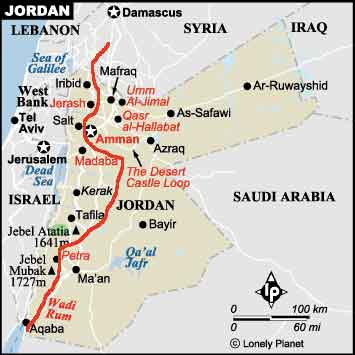

What is World Vision doing in Jordan?
The threat of armed conflict in Iraq has prompted World Vision to urgently
charter a plane to fly in essential supplies for thousands of refugees expected
to flee to neighbouring countries.
The plane is carrying three ten-tonne trucks for the transport of relief items
including:
-6,300 blankets, 1,800 plastic sheets for shelter, 10,000 collapsible water
containers.
World Vision will work in partnership with other humanitarian organizations
to distribute some of the relief goods to refugees at a refugee camp currently
being established along the Jordanian border with Iraq. The remainder will
be held for relief operations inside Iraq.
World Vision also has plans to assist refugees fleeing to Syria, Iran and
to a lesser extent in Turkey.
Of course there is the fate of more than 13 million Iraqi children to consider.
Also, right now, Jordan is going through a very cold winter. Click
here for more information.
Tuesday 11 March.
I arrived at the port at 10.30am and started the slow process of getting the
necessary paper work done. I was charged US$51 for the ferry crossing, including
the bike. Then I had to pay some dollars here and there for god knows what,
taxes for this and taxes for that, they told me. I actually got on board at
1.30pm, the ship was quite modern and the weather was ideal for a little cruise
on the Red Sea. I kept looking at the water to see the red bits but to this
day I have absolutely no idea why they call it the Red Sea, the guy that named
it must have been colour blind or just blind.
We followed the narrow channel with Egypt on the left and Saudi Arabia on
the right until we got to the end where we could now see Israel and Jordan.
Once again I was at a point where four different countries met, Egypt, Israel,
Saudi and Jordan.
Before disembarking I had to pay US$16 for Jordan entry tax and US$10 for
bike insurance. I was giving a 3 days transit visa and assured that I would
not have anything more to pay in Jordan if I kept my visit to 3 days (remember
that bit).
We were on terra ferma at 7pm and I went straight to a hotel.
I left early the next morning. It was daylight at 5.30am and I was looking
forward for a nice ride in Jordan. The sky was all clear and the temperature
mild. I decided to make a small detour to Wadi Rum, this region is supposed
to have the most spectacular desert scenery in the world. When I got there,
the village was deserted and I could see that if I wanted to go farther in
that region I would have to go in the sand again as the tarmac road had ended.
Thank you but no thank you, I thought, I have had all the sand to last me
a lifetime, so I turned around. I noticed that the temperature was dropping,
the sky was now overcast, something that I was not used to anymore. I was
heading to Petra. The road was climbing and suddenly I found myself on a very
foggy road, I could not see more than 20m ahead of me. Then the condition
got much worse with strong winds, hailstones and snow. When I arrived in Petra
I was so cold that I stopped at the first hotel that I saw to have a hot drink,
it happened to be the Sofitel, one if not the most expensive hotel in the
town. I was welcomed and taken to the restaurant for a hot cup of coffee.
The waiters were very friendly and they told me that usually they have between
200 to 250 guests staying at the hotel but since the trouble with Iraq the
business was very slow. They only had 10 guests that day. The BBC news was
on and I could feel my body coming back to life again but I could not help
worrying about how much that cup of coffee was going to cost me. "The
coffee is complimentary" the waiter told me, that was a relief. I got
back on the bike to Wadi Musa, the closest village to Petra and found a more
appropriate hotel with a good heater. By 1pm I was all set to go and visit
Petra.
Petra, the rose-red city they call it, is hidden amongst the ancient canyons
of Jordan and is the most mystic and glorious treasure of the country. Carved
entirely into the naturally pink rocks, the remains of the once lost Nabataean
city of Petra include temples, Roman theatres, monasteries, houses and roads.
Petra was lost to the outside world for some 700 years before its rediscovery
in the 19th century.
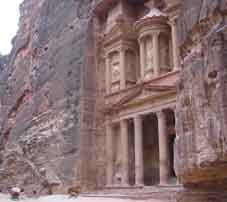
place can have up to 3000 visitors per day; today only 15 bought a ticket.
Thursday 13 March.
I was not going to take a chance with the weather, so I prepared myself for
a very cold ride. Getting dressed took a while, first the thermo underwear
then all the clothes that I had in my bag. By the time I was ready I could
hardly move and felt like the Michelin blow up man. Making a trip to the toilet
once you have got your gloves on is definitely out of the question, or leaving
the keys in your jeans pocket for that matter. So I left in the freezing cold,
happy that the bike was equipped with heated handgrips.
I was going to make another short detour to the Dead Sea which runs between
Israel and Jordan on the West side of the country but I could not see the
point since it was already dead, my visit would surely not bring it back to
life. So I went straight to the capital, Amman, the weather was starting to
warm up again but the cold wind refused to let go. After circling the city
a few time trying to find a place to stay for the night, I finally found one
that was not going to break my budget. For US$2 I had a room that I had to
share with four other local men. I regretted it during the night as a couple
of them kept me awake with their snoring.

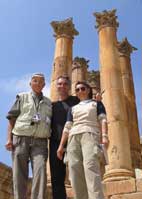
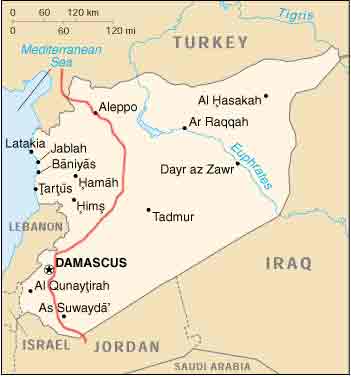
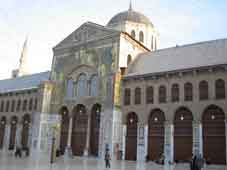
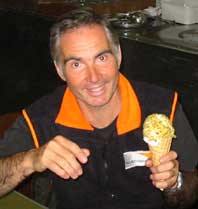
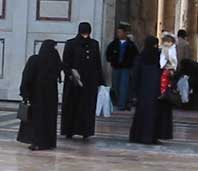
plusieurs milliers de réfugés
dans les prochaines semaines et ont déja établis des camps le
long de la frontière avec la Jordanie. Ils vont aussi organisés
d'autres camps en Syrie et en Iran.
Bien-sur il y a aussi le futur de 13 millions d'enfants à considerer.
Mardi 11 mars 03.
Je suis arrivé au port à 10.30 et tout de suite j'ai commencé
les démarches nécessaire pour organiser mon passage. J'ai du
d'abord payer 50 Euros pour le bateau, cela inclus aussi le passage de la
moto. Ensuite j'ai payé des Euros par-ci par-là pour les taxes
douanières. A 13.30 tout était réglé et je m'installais
sur ce bateau plutot moderne et par un temps spendide, pour une petite croisière
sur la Mer Rouge. J`avais beau regardé la mer dans tout les sens en
espérant y voir des petits points rouges, rien à faire, je ne
comprend toujours pas pourquoi ils l'appellent la Mer Rouge.
Nous avons suivi la cote de l'Arabie Séoudite d'un coté et celle
de l'Egypte de l'autre pendant 3 heures jusqu'au bout. Là ou, encore
une fois, quatre pays se rencontrent (La Jordanie, l'Israël, l'Egypte
et l'Arabie Séoudite).
Avant de débarquer j'ai encore du payer 16 Euros pour les taxes de
Jordanie et aussi 10 Euros pour l'assurance de la moto. Ils me donnaient un
visa de transit pour 3 jours et m'assurer que je n'aurais rien d'autre à
payer en Jordanie. A 19 heures j'étais enfin sur la terre ferme et
je trouvais un hotel à Aqaba pour passer la nuit.
A 5.30 il faisait déjà jour et j'en profitais pour partir de
bonne heure, le ciel était tout bleu et la journée s'annonçait
magnifique. Je décidais de faire un petit détour par Wadi Rum,
une région réputé d'avoir des paysages désertiques
les plus beaux du monde. Le village de Wadi Rum était plutot déserté
et comme la route goudronnée s'arrêtait içi je devais
continuer dans le sable. Comme du sable j'en ai eu plus que j'en voulais,
je faisais demi-tour sans demander mon reste.
Je remarquais que la température baissée plutot dramatiquement
et que le ciel se couvrait de nuages menaçant, quelques chose dont
j'avais perdu l'habitude. J'allais vers Pétra, une ancienne cité.
La route montait de plus en plus et soudainement j'étais dans un brouillard
épais, je n'y voyais pas à plus de 20m, je roulais au pas car
la route était devenu trés sinueuse. Cet alors que les conditions
ont empirés, je faisais face à un vent violent, de la grêle
et mème de la neige. Quand je suis arrivé à Pétra
j'étais mort de froid, je m'arrêtais au premier hotel venu, le
Sofitel, un des plus chers hotels du pays et je demandais un café.
Les serveurs étaient trés accueillant et aussi content d'avoir
un client car depuis les problèmes avec l'Iraq il n'y a plus de touristes
dans la région. Cet hotel peut loger jusqu'à 250 personnes et
ce jour là ils avaient 10 clients. Je me réchauffais bien vite,
les serveurs m'avaient allumés la télévision, TV5 s'il
vous plait. En bref le grand confort mais je m'inquiètais quand mème
à l'approche de l'addition. Quand le moment fut venu de partir les
serveurs, mes amis maintenant, me disaient que le café était
sur le compte de la maison. Ouf !
Je reprenais la route jusqu'à Wadi Musa, petit village tout prés
de Pétra et y trouvais un petit hotel plus approprier avec un bon chauffage.
A 13 heures j'étais d'attaque pour aller visiter Pétra.
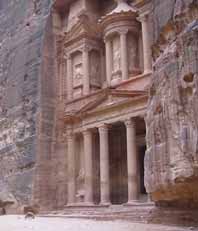

Vendredi 14 Mars.
Je décidais de passer par Jerash pour y visiter une autre ancienne
ville Romaine. Là j'y rencontrais mes amis Allemands Bernd et Barbara
Jacobi que j'avais rencontré à Khartoum. Je passais la matinée
à visiter ce site avec eux puis je me dirigeais vers la frontière
Syrienne en début d'aprés-midi. A la douane, je commençais
par l'immigration. Quand l'officier m'a dit que mon visa transit n'était
plus valable et que je devais payer 16 Euros. Je lui expliquais que ce n'était
pas possible car cela ne faisait que trois jours que j'étais en Jordanie
ayant entrer le 11 à 19 heures, il m'a répondu que non, que
cela faisait quatre jours, le 11, le 12, le 13 et le 14. Pas question de contredire
un douanier, s'il dit que la neige est noir et bien la neige est noir. J'ai
payé sans demander mon reste. Du coté Syrien les choses ont
été beaucoup plus rapide, le douanier m'a dit de payer 40 Euros,
30 pour l'assurance de la moto et 10 pour les taxes. J'ai payé sans
commentaires et reprenais la route vers Damas.
La Syrie
La Syrie compte 18 millions d'habitants et ils sont renommées pour
leurs hospitalitées. Damas, la capital, est supposé être
la plus ancienne ville du monde.
Il y a la vielle ville dont la Mosquée des Omayades qui est la plus
cèlébre des mosques de l'Islame. Elle est unique dans son architecture,
dans sa construction et dans ses ornements. Elle est considérée
comme une école de construction et d'architecture des mosquées
au monde.
Le temps était beaucoup plus agréable et je resortais mon tee-shirt
mais pas de shorts, cela ne serait pas acceptable.
J'en profitais pour faire une révision à la moto, changer l'huile,
nettoyer le filtre à air et comme mon pignon arrière avait autant
de dent qu'un nouveau née j'en profitais pour le changer ainsi que
la chaine et le pignon avant. J'en suis bien content de cette moto, elle est
trés confortable, trés économique et je peus compter
dessus.
Aprés quelques jours de repos, à déguster les délicieuses
pâtisseries orientale sans oublier les glaces Arabiques, je repartais
vers la Turquie.
Mercredi 19 Mars.
Il a plu toute la nuit et la fraicheur est revenue. Je n'avais pas du tout
envie de prendre la route mais il fallait continuer. Je partais à 8
heures, la pluie avait cessée mais aprés une heure de route
elle réapparaissait, je me faisais tremper et décidais de faire
alte pour la journée à Hama, petite ville à une centaine
de km de la frontière Turque.
Voila, si la pluie continue demain je partirai aprés-demain et si il
pleut encore aprés-demain....
Aurevoir.
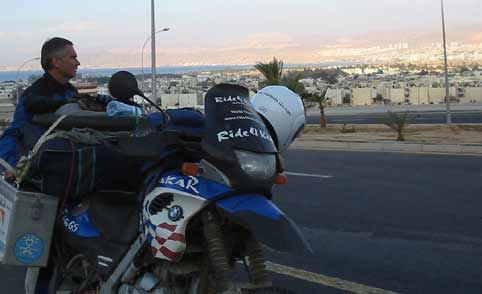
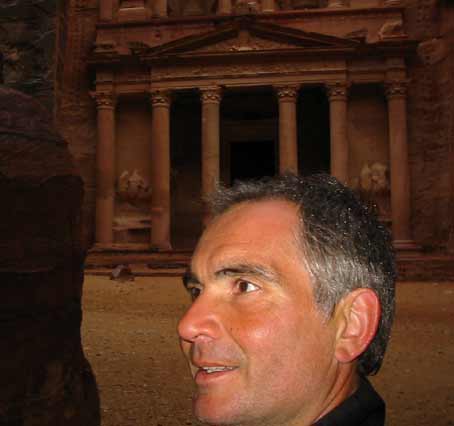
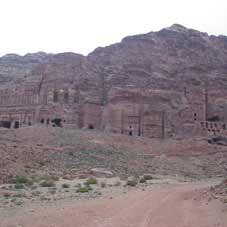
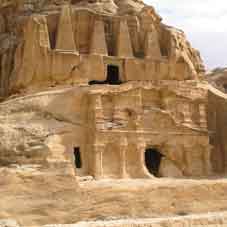

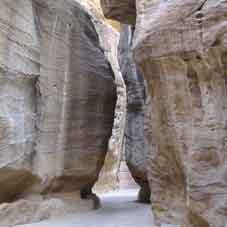
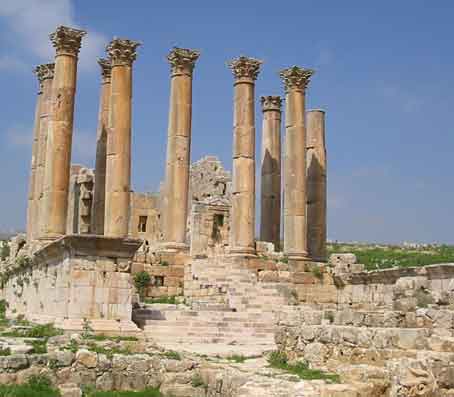
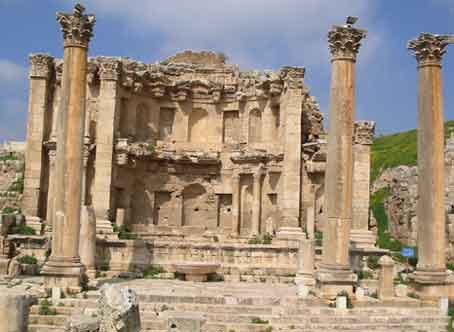

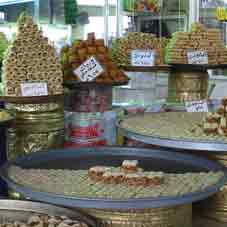
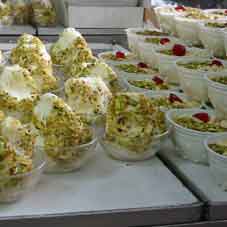
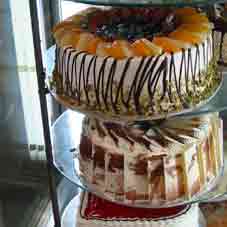
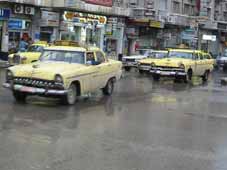
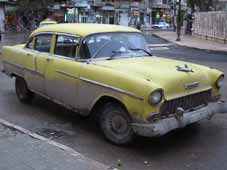
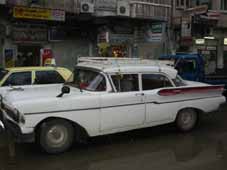
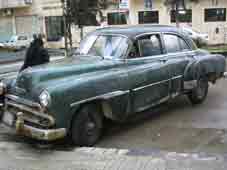
 |
 |
 |
 |
 |
 |
 |
 |
 |
 |
 |
 |
||||||||
|
|||||||||||||||||||